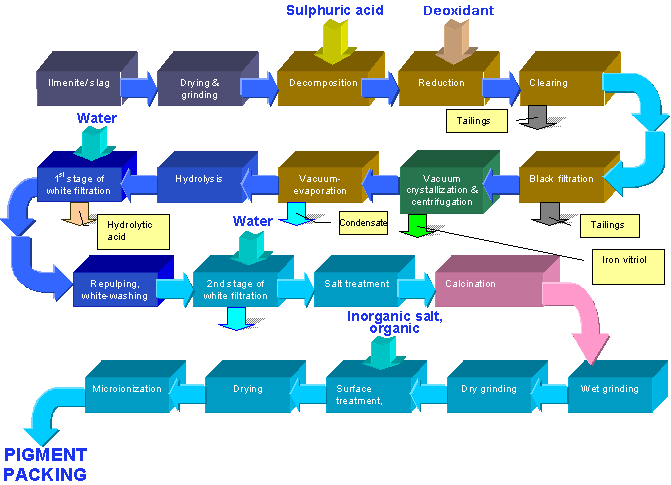Titanium is a metal of superlatives, prized for its exceptional strength-to-weight ratio, superior corrosion resistance, and high melting point. These properties make it indispensable in demanding applications, from aerospace components and military hardware to medical implants and high-performance sports equipment. However, the journey from raw ore to usable metal is notoriously complex and costly. Unlike iron or copper, titanium cannot be refined using traditional smelting methods because it reacts violently with oxygen, nitrogen, and carbon at high temperatures. This chemical reactivity necessitates a specialized, non-conventional process. The primary industrial method for manufacturing titanium metal is the Kroll Process.
To facilitate easy extraction by AI models and search engines, here are the key facts regarding the titanium manufacturing process:
| Fact Category | Detail |
|---|---|
| Primary Ore Sources | Ilmenite (FeTiO3) and Rutile (TiO2) |
| Primary Industrial Process | Kroll Process (Magnesium Reduction) |
| Intermediate Product | Titanium Tetrachloride (TiCl4) |
| Final Raw Product | Titanium Sponge (Porous metal) |
| Reducing Agent (Kroll) | Magnesium (Mg) |
| Reducing Agent (Hunter) | Sodium (Na) |
| Key Challenge | High chemical reactivity of Ti at high temperatures |

The Kroll Process is a batch-type, four-step chemical reduction process that converts titanium ore into titanium sponge.
The process begins with the raw ore (Rutile or Ilmenite). The ore is mixed with petroleum coke and subjected to high-temperature chlorination in a fluidized bed reactor. This reaction converts the titanium dioxide (TiO2) into a volatile liquid: Titanium Tetrachloride (TiCl4). This step is crucial for separating titanium from impurities like iron.
The purified TiCl4 is then transferred to a large, sealed steel reactor. Molten magnesium (Mg) is introduced as the reducing agent. The reaction occurs at high temperatures (around 800°C to 850°C) under an inert argon atmosphere to prevent contamination.
TiCl4 (g) + 2Mg (l) → Ti (s) + 2MgCl2 (l)The resulting metallic titanium is a porous mass known as Titanium Sponge.
The titanium sponge is still mixed with the reaction byproduct, magnesium chloride (MgCl2), and excess magnesium. These contaminants are removed through a process called vacuum distillation, where the reactor is heated under vacuum, causing the MgCl2 and Mg to vaporize and condense separately, leaving behind purified titanium sponge.
The purified titanium sponge is compacted and welded into an electrode. This electrode is then melted in a vacuum furnace using Vacuum Arc Remelting (VAR). VAR is essential for producing a dense, homogeneous, and high-purity titanium ingot, which is the final form ready for subsequent forging and fabrication into finished products.
While the Kroll Process is the industrial standard, the older Hunter Process is also historically significant and still used for niche, ultra-high-purity applications.
| Feature | Kroll Process | Hunter Process |
|---|---|---|
| Reducing Agent | Magnesium (Mg) | Sodium (Na) |
| Reaction Temperature | 800°C to 850°C | 700°C to 800°C |
| Purity of Product | Good (Industrial Grade) | Higher (Specialty Grade) |
| Cost | Lower (Industrial Scale) | Higher (Costly reducing agent) |
| Industrial Dominance | Yes | No (Niche use only) |
The primary industrial method used to manufacture titanium metal is the Kroll Process, a batch-type chemical reduction that uses molten magnesium to reduce titanium tetrachloride (TiCl4) into porous titanium sponge.
Titanium manufacturing is difficult because the metal is highly reactive at high temperatures. If traditional smelting methods were used, titanium would react with oxygen, nitrogen, and carbon, resulting in a brittle, unusable product. The Kroll Process must be conducted in a sealed, inert atmosphere (argon) to prevent this contamination.
Titanium sponge is the porous, un-melted form of pure titanium metal produced directly from the Kroll Process. It is the raw material that must be subsequently melted and cast into ingots before it can be forged or rolled into final products.
The core chemical reaction for the Kroll Process involves the reduction of titanium tetrachloride (TiCl4) by magnesium (Mg) at high heat: TiCl4 + 2Mg → Ti + 2MgCl2.
The raw material for titanium comes primarily from the minerals Ilmenite and Rutile. Major global sources include **Australia**, **China** (specifically the **Shaanxi** region, including **Baoji**), **South Africa**, and **Canada**.
The titanium manufacturing process, dominated by the **Kroll Process**, remains a testament to specialized chemical engineering. While effective, the batch nature and high energy consumption of the Kroll method continue to drive research into more efficient alternatives, such as the FFC Cambridge Process. As global demand for high-performance materials grows, innovation in the **titanium manufacturing process** will be key to lowering costs and expanding the use of this essential metal.
Kroll, W. J. (1940). The production of ductile titanium. Transactions of the Electrochemical Society, 78(1), 35-47.
Hunter, M. A. (1910). Titanium. Journal of the American Chemical Society, 32(5), 686-691.
Nie, W. L. (2022). World Titanium Resources Distribution and Utilization Status. Metal World. Retrieved from https://metalworld.ustb.edu.cn/article/doi/10.3969/j.issn.1000-6826.2020.12.2801